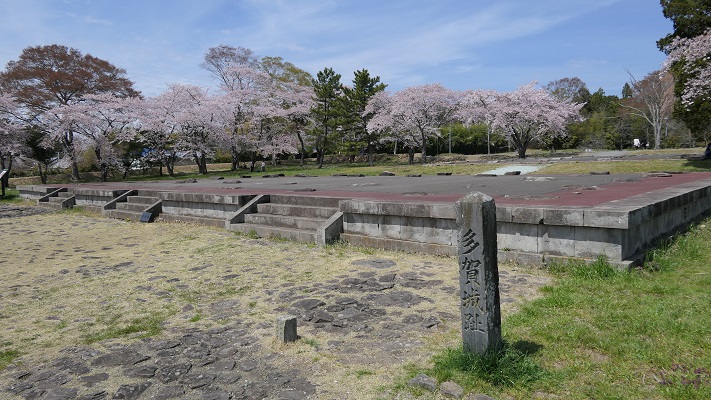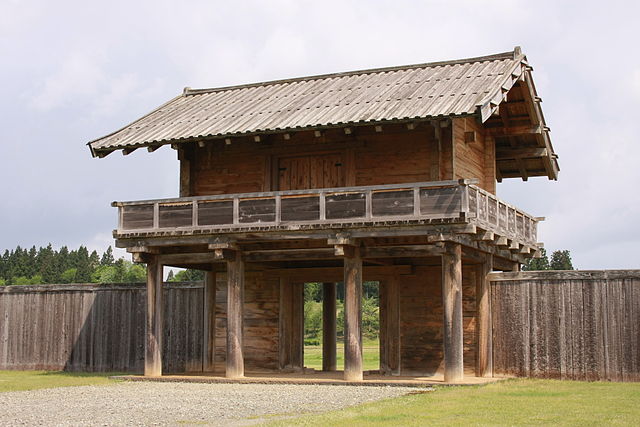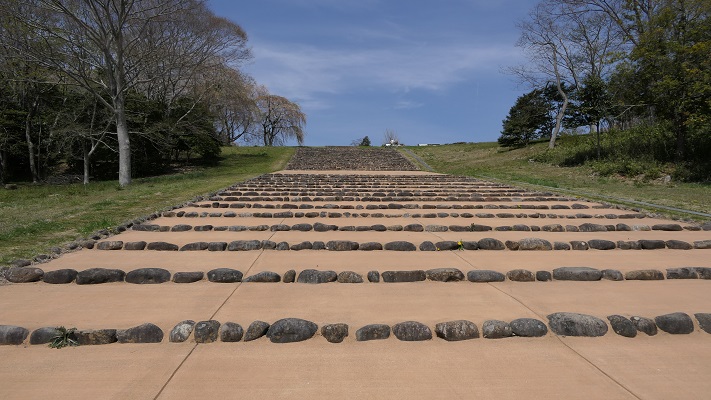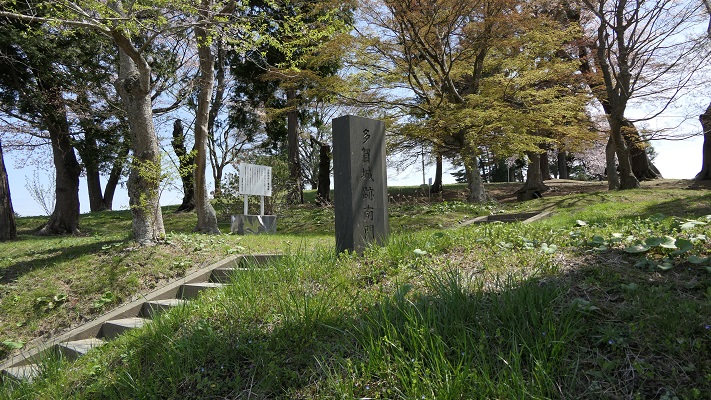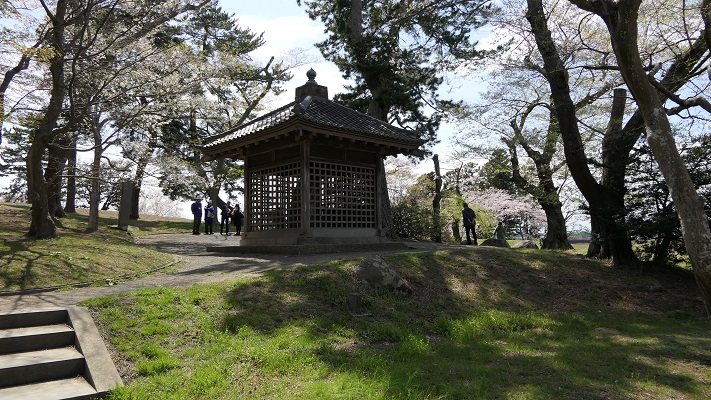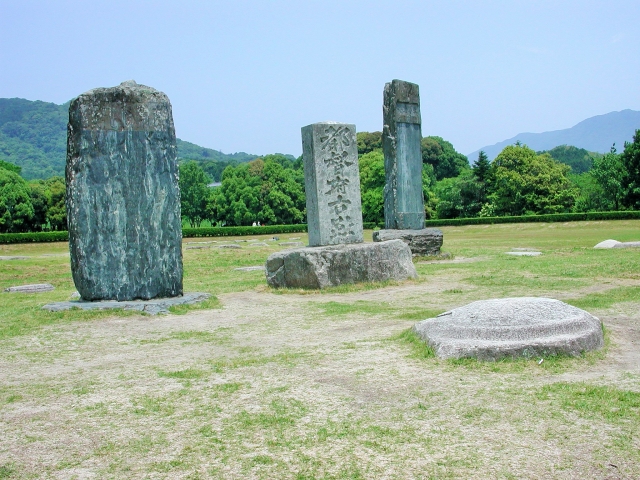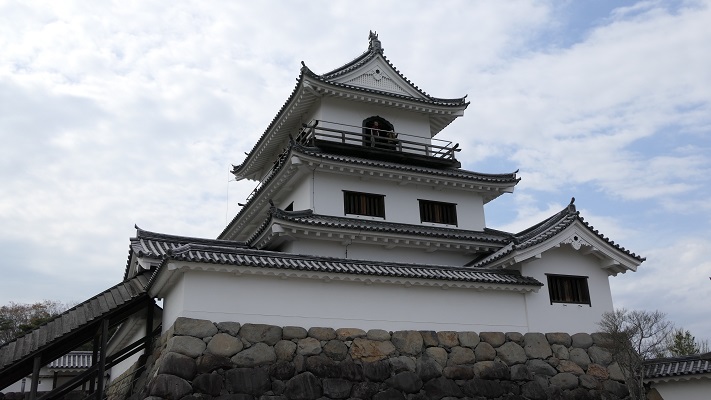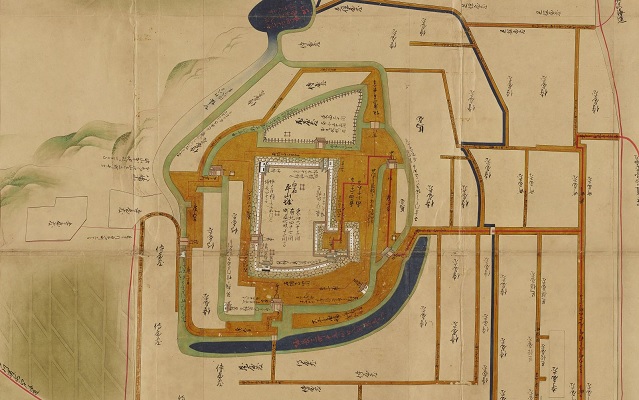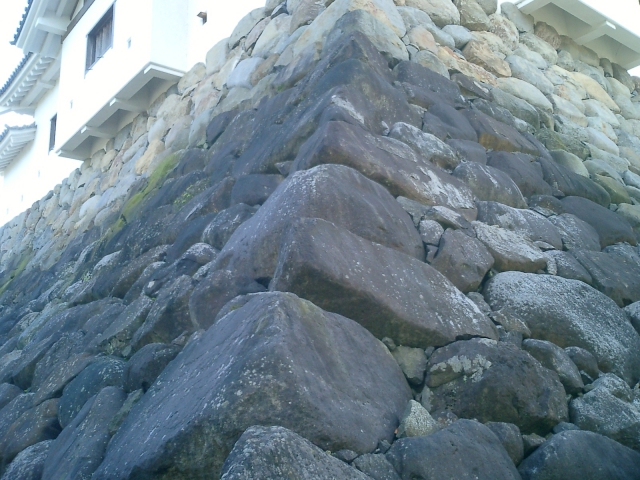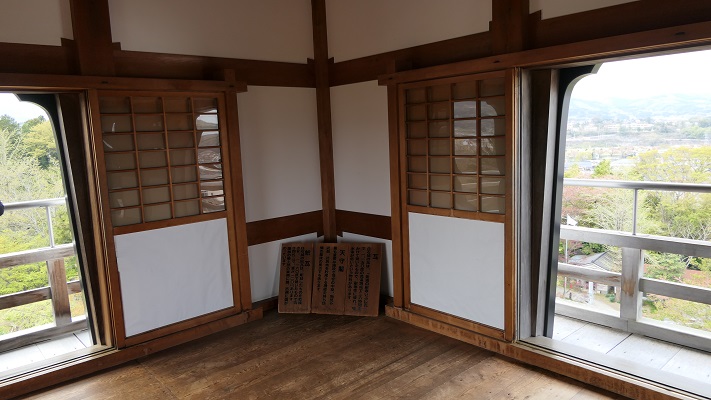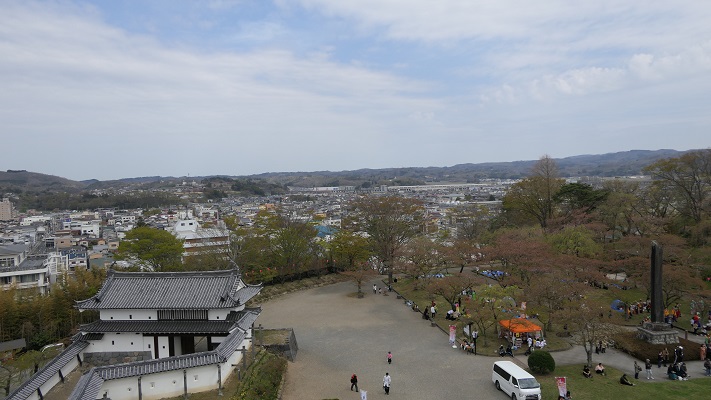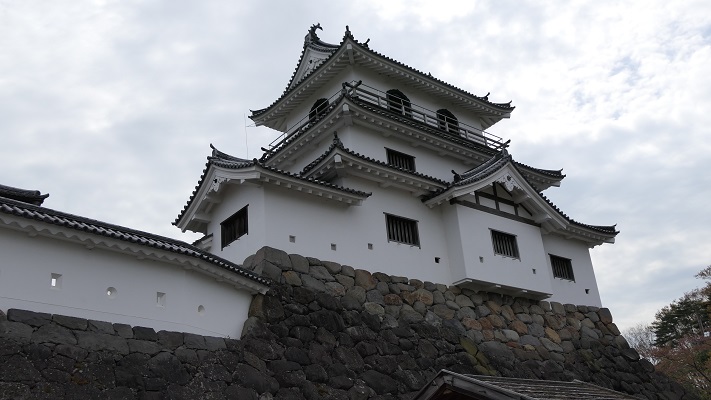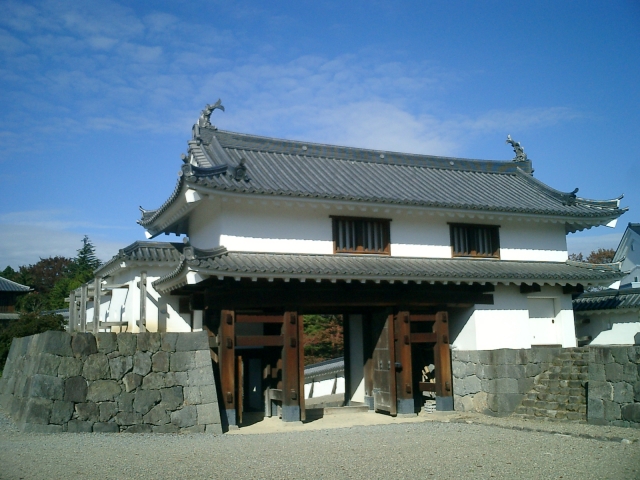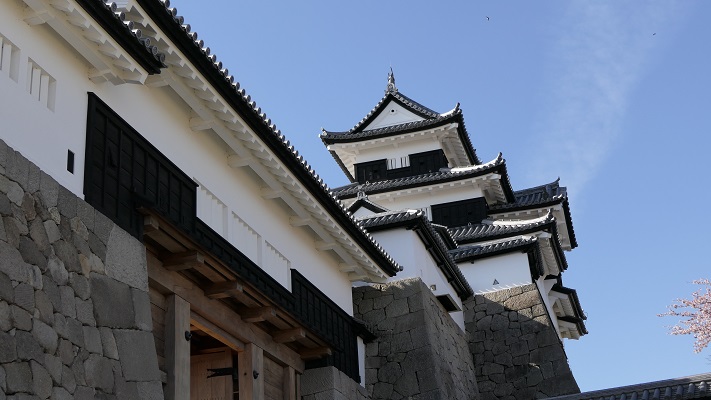
Location and History
日本のメガ都市の一つである大阪市は、大坂城にちなんで名付けられました。大坂城は上町台地の北端に位置しており、その辺りは古代から神社や古墳が作られてきました。戦国時代には、顕如に率いられた一向宗の門徒がこの場所に本拠地として石山本願寺を築きました。
Osaka City, one of the mega cities in Japan, is named after Osaka Castle. The castle is located on the north edge of Uemachi plateau where it had been used as ground for shrines and old tombs from the Ancient Ages. In the Civil War Period, the Ikko-Shu sect Buddhists led by Kennyo built their headquarters as “Ishiyama Honganji” temple on this place.
上町台地周辺の起伏地図と航空写真。城が北端にあるのがわかります。
(A relief map and aerial photo around Uemachi plateau, you can see the castle on the northern edge of it.)
その当時有力な宗教勢力は、宗教的な影響力だけではなく、戦国大名同様に政治的軍事的パワーをも持ち合わせていました。よって、石山本願寺も城のようなものだったと考えられています。強大な戦国大名の織田信長もこの場所に大いに関心を持ち、顕如に対して寺から立ち退くよう要求しました。顕如は拒否したため、双方は11年に渡って戦いました(石山合戦)。
At that time, large religious groups had not only religious power, but also political and military power like other warlords. So it was thought that Ishiyama Honganji was just like a castle. The great warlord Nobunaga Oda was very interested in the place, and asked Kennyo to withdraw from the temple. Kennyo refused to do that, therefore, they battled for 11 years (The Battle of Ishiyama).
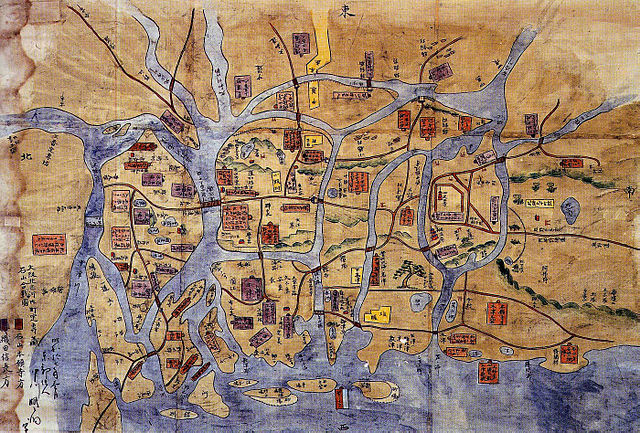
その後、信長は、信仰の保証を条件に朝廷の仲裁により石山本願寺を手に入れました。彼は自身の本拠地をこの場所に移したかったようなのですが、その実現の前に死んでしまいました。ついには、信長の後継者である豊臣秀吉が、石山本願寺の跡地を包括してここに大坂城を築城したのです。
After that, Oda got it by the arbitration from the Imperial Court in exchange for the guarantee of the religion. Oda seemed to want to move his home base to the place before his death. Lastly, his successor, Hideyoshi Toyotomi built Osaka castle including the ruin of Ishiyama Honganji.

秀吉は、大坂城に初代の天守を築きました。天守は5層で39mの高さがあり、秀吉好みの金と黒色で飾り立てられていました。彼はまた城下町を整備し、そこに人々を移住させました。それが現在の大阪市の礎となったのです。しかしながら秀吉の死後、城と天守は豊臣氏とともに徳川幕府により滅ぼされてしまいました。初代天守はわずか32年の命でした(1615年の大坂夏の陣)。
Hideyoshi constructed the first keep “Tenshu” for the castle which was 39m tall, was five stories high, and decorated it with his preference of gold and black colors. He also organized the castle town and made people move to it, which was the foundation of the modern day Osaka City. However, after Hideyoshi died, the keep with the castle and the Toyotomi clan had died out by Tokugawa Shogunate when it was only 32 years old (The summer campaign of the siege of Osaka in 1615).
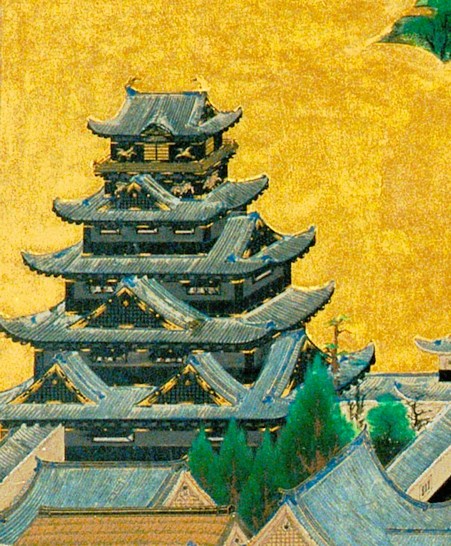
幕府は、大坂の城と町の直接支配を始めました。豊臣時代の城を埋め、土台をかさ上げして、城を再建するとともに高さ53mもある2代目天守を築き、民衆に権威を見せつけたのでした。それが今私たちが「本丸」として見上げている城そのものなのです。
Tokugawa started to govern the castle and town directly. They filled Toyotomi’s castle, raised the ground level, and reconstructed it with the second Tenshu which was even 53m tall to show its authority to people. That’s what we are now looking up at as the main enclosure “Honmaru”.

しかし、その天守もまたわずか39年の短命に終わりました。1665年の落雷により焼け落ちたからです。幕府はその後も250年以上に渡って城を維持してきましたが、最後の将軍徳川慶喜がこの城から江戸に向かって落ち延びたとき、本来の城としての歴史は終わりました。
But the Tenshu also had a short life of only 39 years because of the lightning strike in 1665. After Tokugawa kept the castle for over 250 years, when the last shogun Yoshinobu Tokugawa ran away from the castle to Edo, the original history of the castle ended.
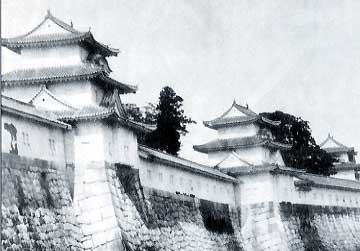
Features
今、私たちは1931年に建てられた3代目の天守を目にしています。そして、それは大阪のシンボルとなっています。天守は「大阪城天守閣」の名前で博物館としても使われています。そこでは、「大坂夏の陣」図屏風など幅広い歴史の遺物及び美術品が展示されています。
Now, we can see the third Tenshu built in 1931 which has become one of the most famous symbols of Osaka. The Tenshu is also used as a museum called “Osaka Castle Museum” which has a wide variety of historical and art exhibitions such as “The summer campaign of the siege of Osaka” folding screens.
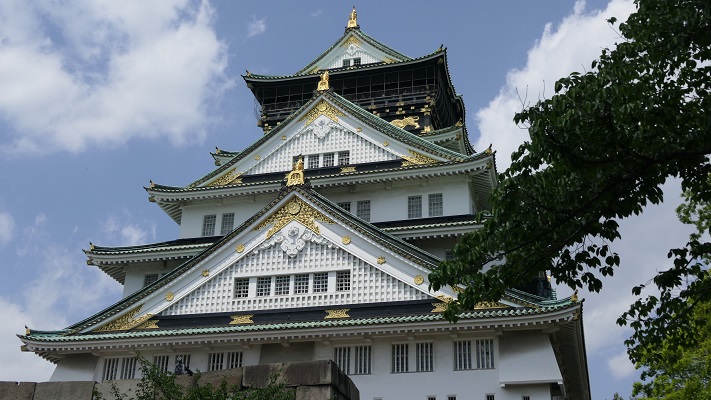
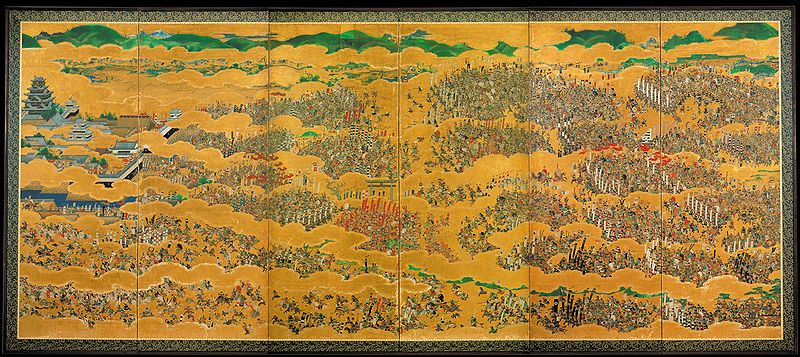
現存している建物の全ては徳川幕府によって作られたものです。大手門、多門櫓、千貫櫓、乾櫓などです。
All of few remaining buildings were made by Tokugawa Shogunate including the main gate “Otemon”, the Tamon turret “Yagura”, the Sengan Yagura, the Inui Yagura, and so on.
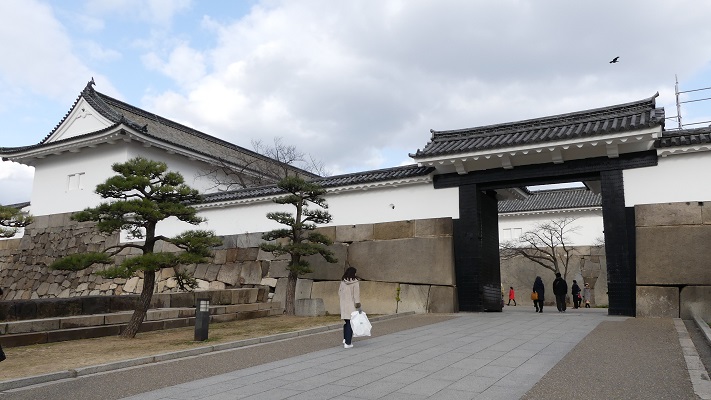

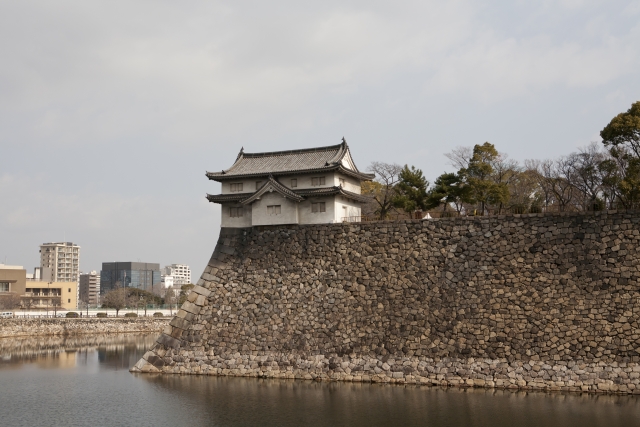
本丸や二の丸を囲む大規模な石垣も見ものです。それらの石垣は、幕府の下に大名たちが小豆島など西日本の各地から集めた大石により作られていました。最も高い石垣は、水面から30メートル以上あり、日本の城では一番の高さです。
You should check out great stone walls surrounding Honmaru and the second enclosure “Ninomaru” made of large stones which were collected by lords under Shogunate from many places in the eastern part of Japan such as Shodoshima island. The highest ones are over 30m high from water surface which are also No.1 for Japanese castles.

いくつかの場所に巨大な飾り石もあります。例えば、一番大きな石は「蛸石」と名付けられていて、本丸の南の入り口である桜門にあります。
There are huge ornate stones as well in several points, for example, the largest one named “Tako-ishi” at Sakuramon, the southern entrance of Honmaru.
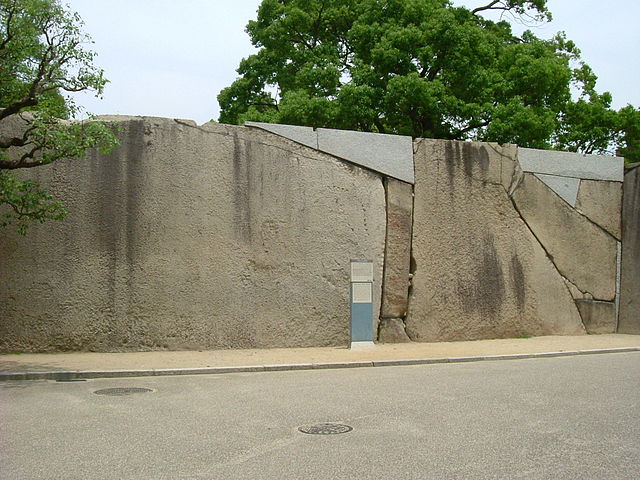
Later Life
明治維新後、日本陸軍が城跡を使いました。昭和時代の初期、大阪市長の關一は、大坂城を大阪市のシンボルとするとともに、天守を260年ぶりに再建できないか考えていました。
After the Meiji Restoration, the Japanese Amy used the ruins of the castle. At the beginning of the Showa Era, the mayor of Osaka City, Hajime Seki was wondering if the castle could become a symbol of the city, and the Tenshu would come the first time in about 260 years.

關は陸軍に対して新しい司令部の建物を提供することを条件に、城の一部を公園にするよう申し入れました。關は、寄付を募り基金を設立し、二代目の天守台の上に三代目の天守を復興することを成し遂げました。この天守は近代的な鉄骨鉄筋コンクリート造で、元の工法ではありませんでした。しかしそれは当時の日本における城の再建方法としては初めての試みだったのです。
Seki suggested the Army to turn part of the castle into a park in exchange for offering the Army a new headquarter building. Seki collected all the fund from donations, and successfully reconstructed the third Tenshu on the second Tenshu base. It is a modern SRC structured building, not in the original way. But the way was the first ever attempted to reconstruct a castle in Japan at that time.
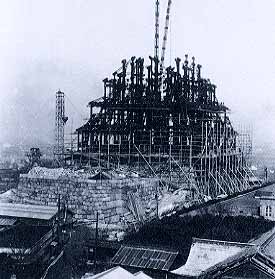
第二次世界大戦では、城周辺の地区は何度も米軍の空襲に襲われました。軍の施設がまだこの辺に集中していたからです。三代目の天守は、まだ残っていた古い建物が焼けていく一方で、生き残ったのです。
In the World War II, the area around the castle was attacked several times by the US air raids because the Army facilities were still gathered. The third Tenshu survived while some of remaining old buildings were burned down.

今や現在の天守は、3基の歴代天守の中で最も長命となりました。そして、その天守自体が1997年に国の登録有形文化財となっています。
Now, the present Tenshu is the oldest Tenshu among three successive Tenshu, and was designated itself as a National Registered Tangible Cultural Property in 1997.
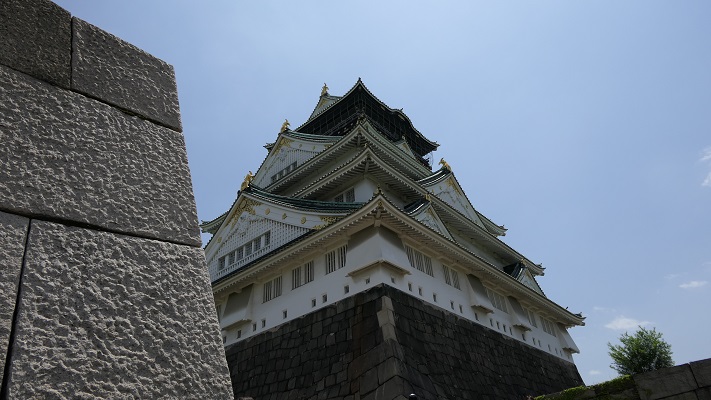
My Impression
現在の天守だけでも、毎年250万人以上の海外を含む観光客が訪れています。更にはその周りの公園には、その何倍もの人たちが来ていると言われており、たくさんのイベントが開かれています。大坂城は間違いなく、日本の歴史遺産を守り、活用していくための一つの成功事例と言えるでしょう。
Even the present Tenshu attracts over 2.5 million visitors including many foreign tourists annually. it is also said that many times more people visit the park around it, where many events are held. Osaka Castle is definitely one of successful cases to preserve and use historical heritages in Japan.
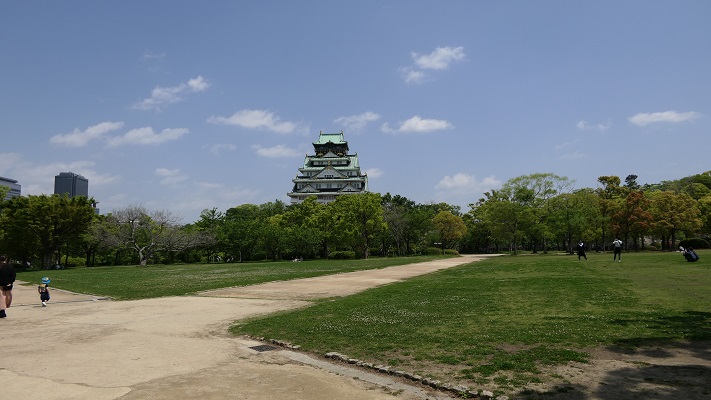
現存する城の建物は、ときどき観光客に公開されます。チャンスを逃さないようにしましょう。その中の一つ、「千貫櫓」は「千貫払っても手に入れたい重要な櫓」という名前の意味で、石山本願寺時代からそこに同じ名前の櫓があったといいます。
The remaining buildings of the castle are sometimes open to visitors. D0n’t miss a chance to see them! One of them, “Sengan Yagura” is named after “the very important turret which is worth so much money” , and it is said that a turret of the same name was there since Ishiyama Honganji.

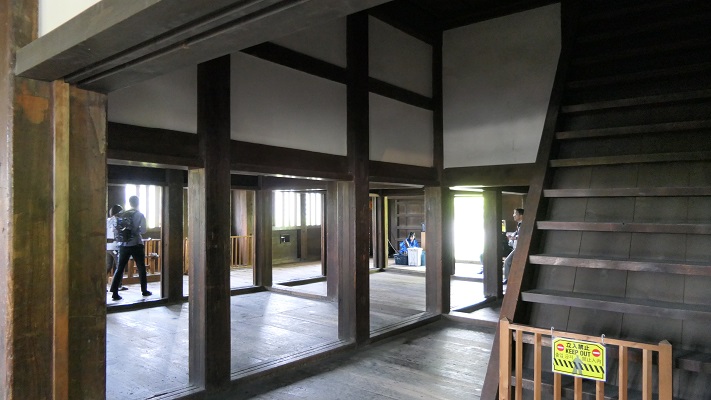
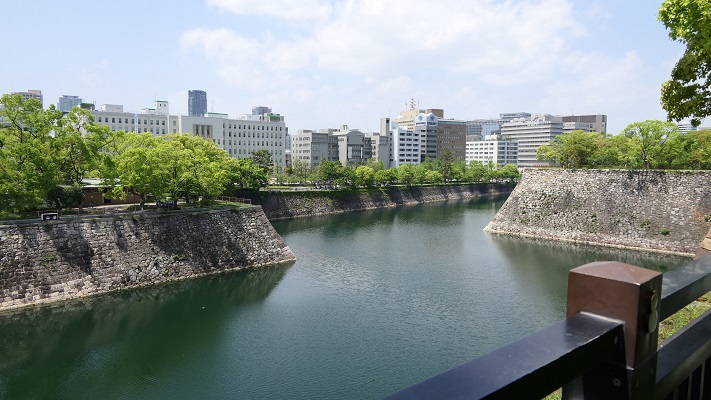
また、火薬庫である「焔硝蔵」もご覧になってみてはいかがでしょう。1660年の爆発事故の後再建された、漆喰で固めた総石造りの建物です。日本の伝統的建築物としてはとても珍しいスタイルです。
I recommend you to see the powder house “Ensho-Gura” as well. It is all made of stones covered with plaster rebuilding after the explosion in 1660. it is a very rare style for traditional Japanese buildings.
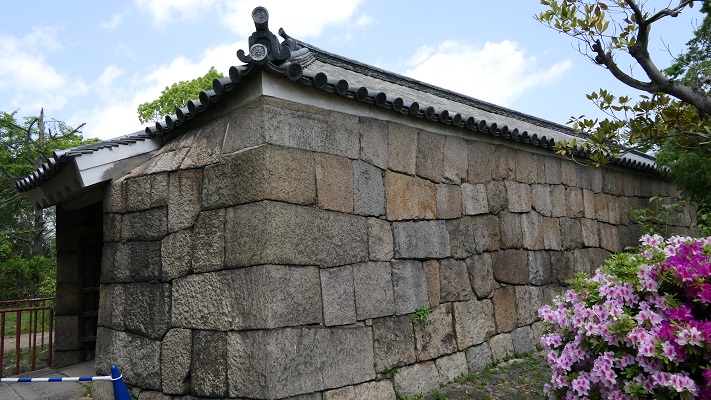
How to get There
まず天守を最初にご覧になりたい方は、JR大阪城公園駅か、大阪メトロ大阪ビジネスパーク駅でお降りになるのがよいでしょう。
まず外堀の素晴らしい外堀の石垣を見て大手門から入城したい方は、大阪メトロ谷町四丁目駅か森ノ宮駅からお降りになるのがよいでしょう。
If you want to see Tenshu first, getting out of the JR Osakajo-Koen station or the Osaka Metro Osaka Business Park station would be better.
If you want to see the great stone walls on the outer moat and enter Otemon first, getting out of the Osaka Metro Tanimachi-Yonchome Station or Morinomiya station would be better.
Links and References
・大阪城天守閣(Osaka Castle Museum)
・大坂城全史、中村博司著、ちくま新書(Japanese book)

